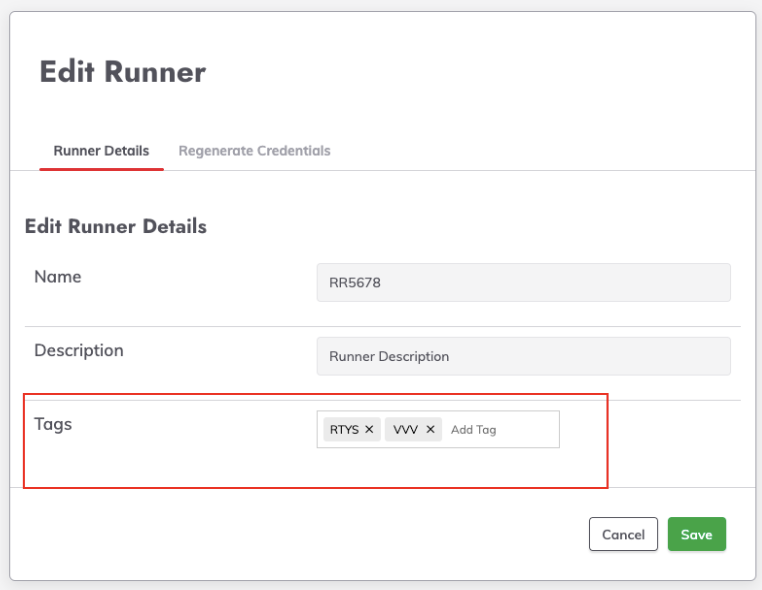System & Project Runner Management
System & Project Runner Management
Runners can be managed at the System level as well as at the Project level of Runbook Automation (cloud and self-hosted). Both the System and Project level management interfaces allow users to create, edit, and delete Runners.
However, there are specific actions that can only take place in the System Level - such as assigning a Runner to multiple projects - or at the Project level - such as defining the Node Filter for dispatching to nodes.
System Level Runner Management
ACL Permissions for Managing Runners at System level
To manage a Runner at the System level, users will need the following ACL permissions:
---
by:
group: my-user-group-name
description: Update Runners at System Level
for:
runner:
- allow:
- update
- delete
- read
context:
application: rundeck
---
by:
group: my-user-group-name
description: Write Access to Runner Feature at System Level
for:
resource:
- allow:
- read
- admin
equals:
kind: runner
context:
application: rundeck
- Change
my-user-group-namein the above ACL policy to the name of the user group that needs to have these permissions.
At the System level, in addition to creating, editing, and deleting Runners, users can also assign Runners to Projects.
To access the System level Runner management interface, navigate to the System menu and select Runner Management:
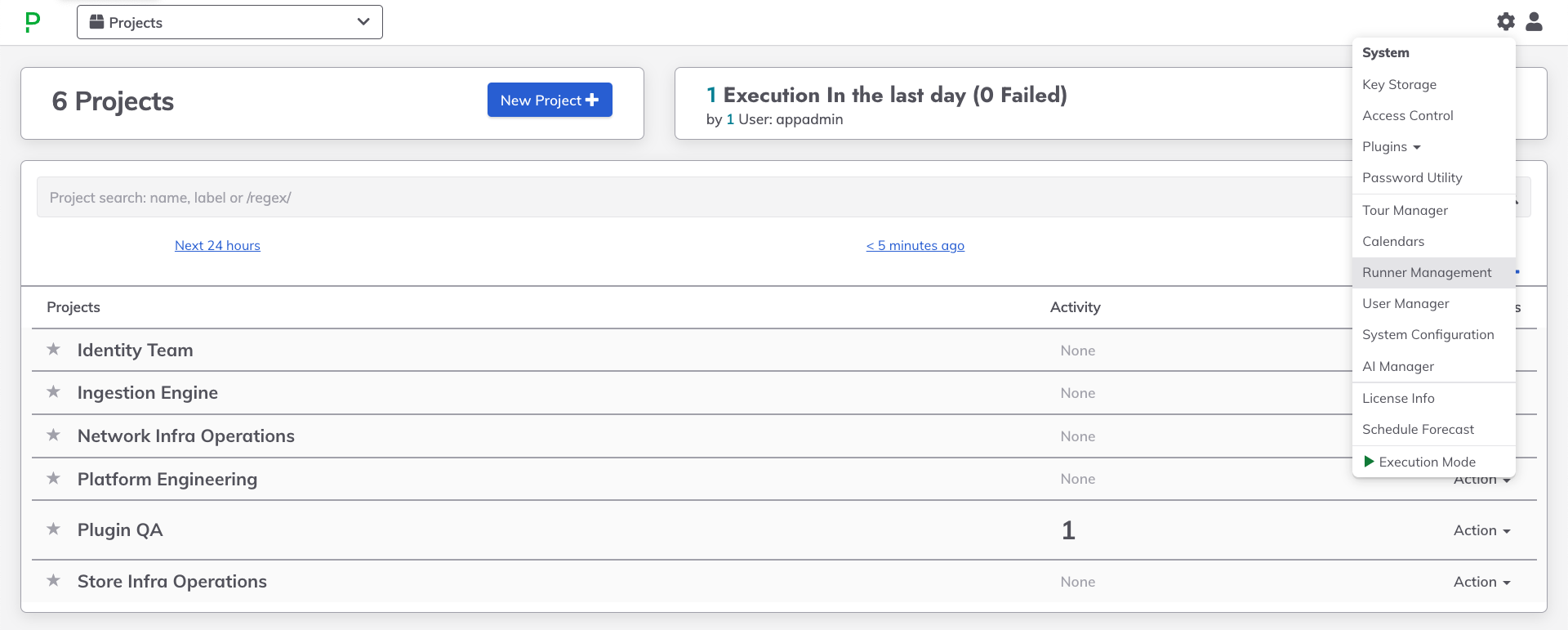
The Runner Management interface will display a list of all Runners in the system:
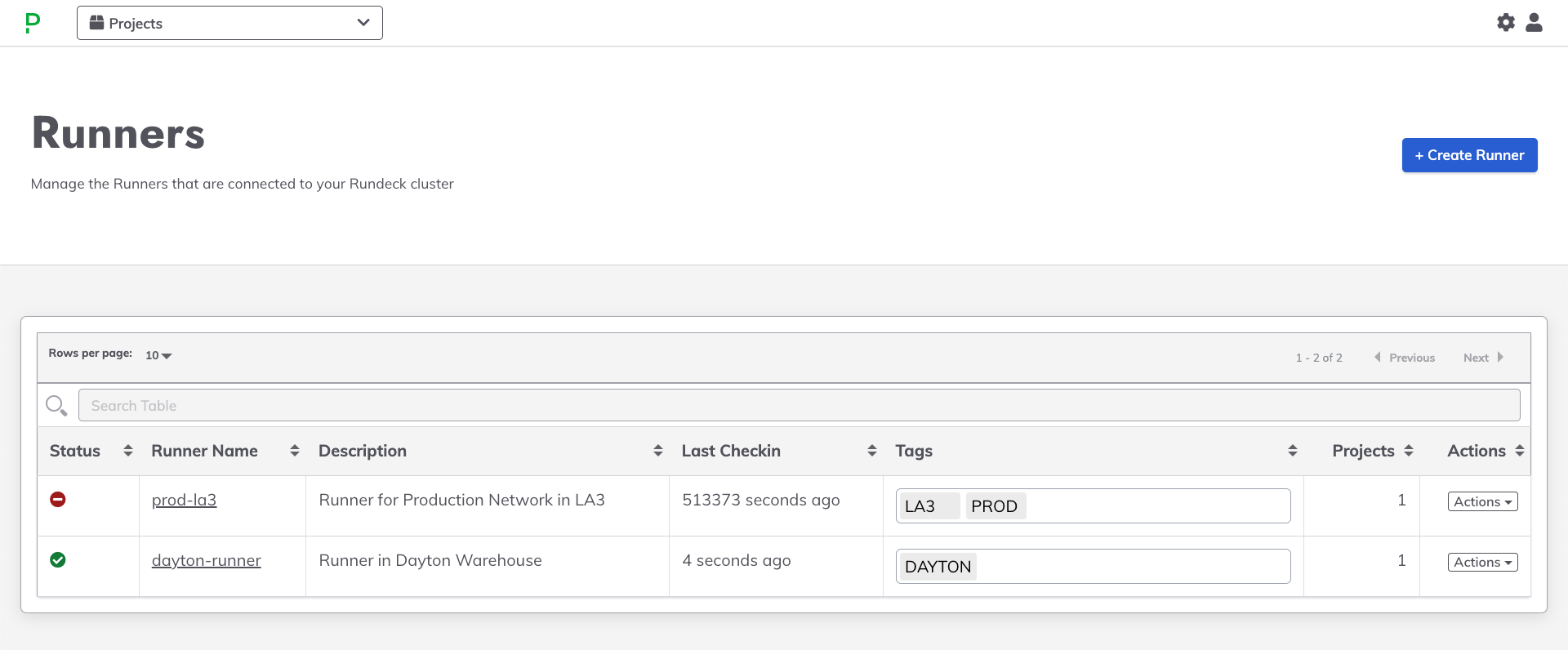
From this interface, users can:
- Create a new Runner. For detailed steps, see Creating a Runner.
- Edit a Runner's Tags.
- Assigning Runners to Projects.
- Manage a Runner's Replicas.
Assigning Runners to Projects
To assign a Runner to a project, follow these steps:
- From the System level Runner management interface, click on the name of the Runner.
- In the Project Assignments section, click on the Add Projects button.
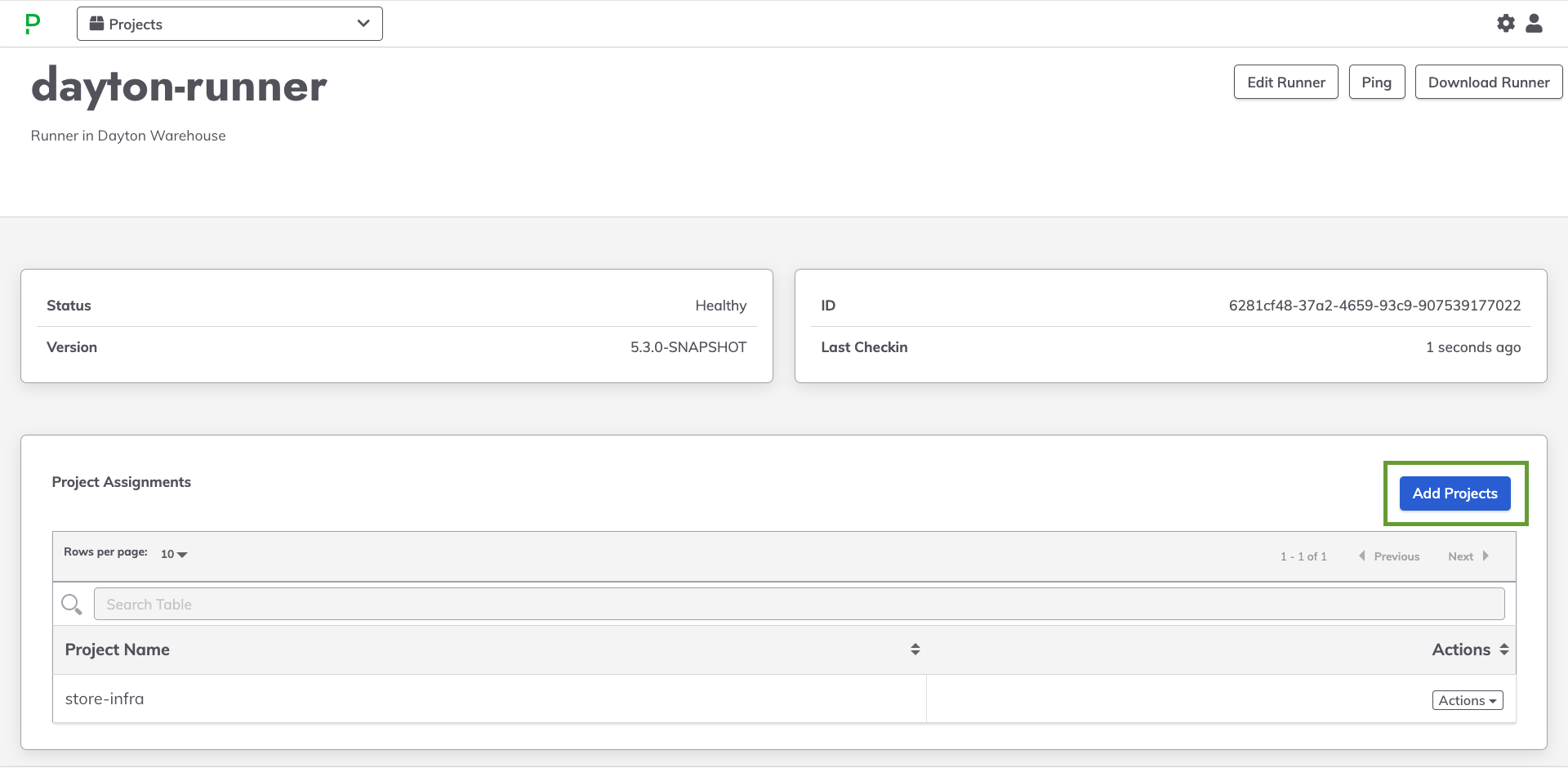
- From the popup, select the Projects that should be able to use this Runner
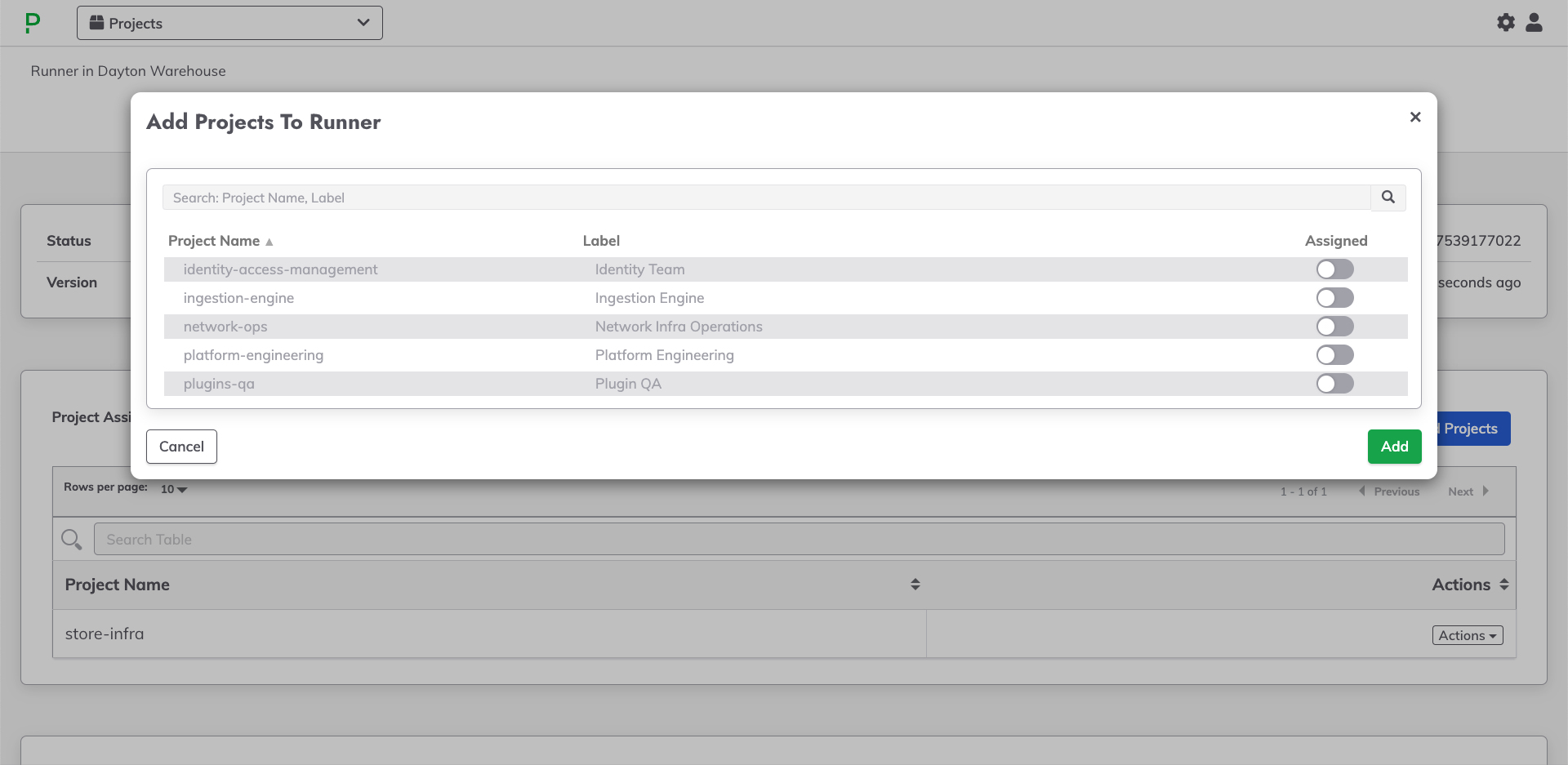
- Click Add
The Runner can now be used within the designated projects for various tasks such as job execution, node discovery, and secrets-management integration.
Managing Runners within a Project
ACL Permissions for Creating Runners at Project level
To create a Runner within a Project, users will need the following ACL permissions:
---
by:
group: my-user-group-name
description: Manage Existing Runners within Project
for:
runner:
- allow:
- read
- update
- delete
context:
project: my-project-name
---
by:
group: my-user-group-name
description: Write access to Runners at the Project Level
for:
resource:
- allow:
- read
- admin
equals:
kind: runner
context:
project: my-project-name
- Change
my-user-group-namein the above ACL policy to the name of the user group that needs to have these permissions.
At the Project level, users can create, edit, and delete Runners for that specific Project. However, Runners created at the Project level are only available for use within that Project and cannot be used in other Projects.
To access the Project level Runner management interface, navigate to a specific Project and then select Runner Management from the left navbar.
The Runner Management interface will display a list of all Runners in the Project:
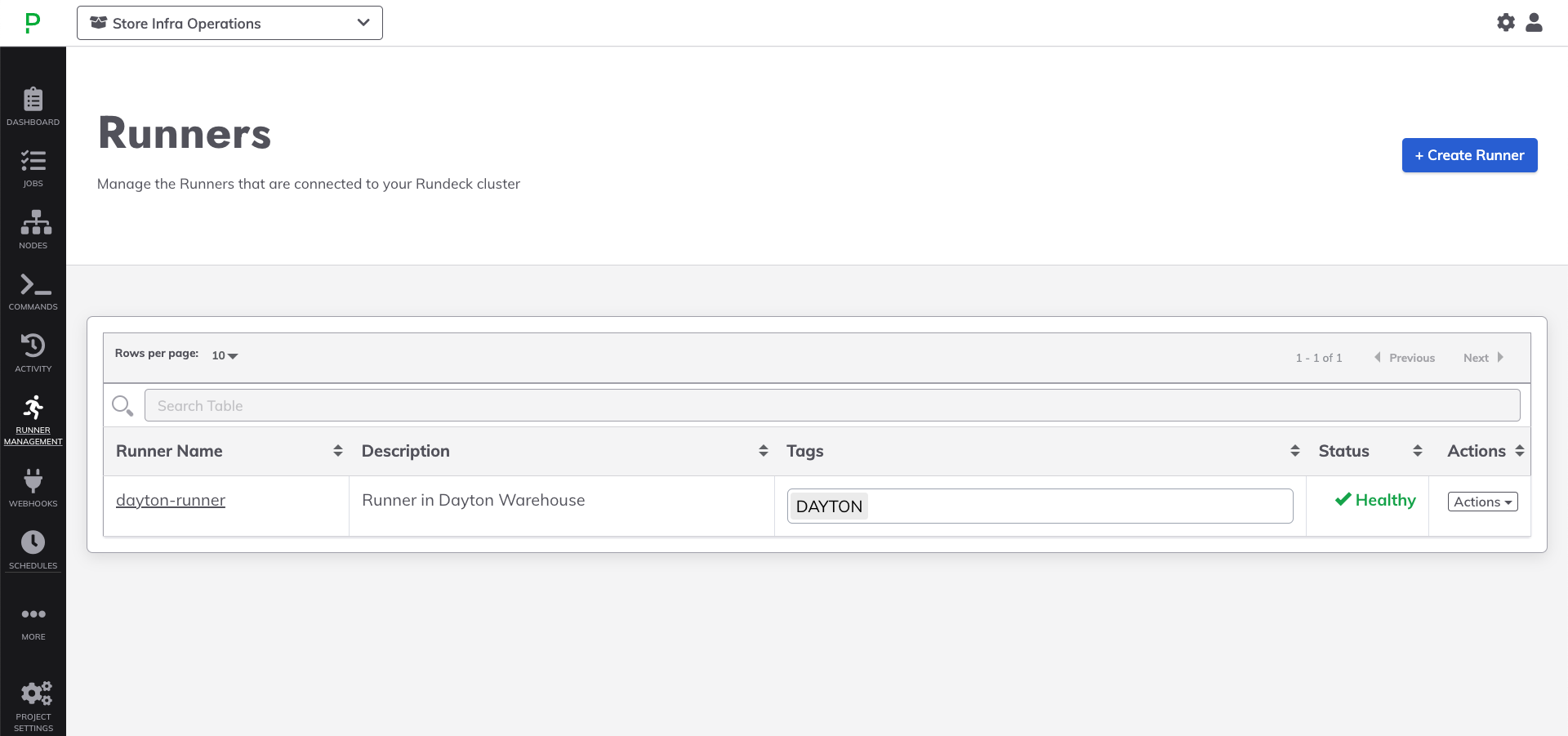
From this interface, users can:
- Creating a new Runner.
- Modify a Runner's Node Dispatch Settings.
- Edit a Runner's Tags.
- Remove a Runner from a Project.
Removing a Runner from a Project
To remove a Runner from a Project, follow these steps:
- From the Project level Runner management interface, click on the Actions dropdown and select Remove from project.
- From the confirmation popup, select Ok.
In order to remove a Runner from a Project, the user must have the following ACL permission:
by:
group: my-user-group-name
description: Allow [delete] for runner
for:
runner:
- allow:
- delete
context:
project: my-project-name
Upgrading from Earlier Self Hosted product versions
If using the self-hosted product and upgrading a version earlier than 5.3.0, the AppAdmin ACL policy stored on the local filesystem may need to be updated.
The following permissions must be added to it in order to manage Runners at the Project level:
runner:
- allow: '*' # allow read/write/delete for all Runners
Therefore, the AppAdmin ACL Policy should look like this:
description: Admin, all access.
context:
project: '.*' # all projects
for:
resource:
- allow: '*' # allow read/create all kinds
adhoc:
- allow: '*' # allow read/running/killing adhoc jobs
job:
- allow: '*' # allow read/write/delete/run/kill of all jobs
node:
- allow: '*' # allow read/run for all nodes
runner:
- allow: '*' # allow read/write/delete for all Runners
by:
group: admin
---
description: Admin, all access.
context:
application: 'rundeck'
for:
resource:
- allow: '*' # allow create of projects
project:
- allow: '*' # allow view/admin of all projects
project_acl:
- allow: '*' # allow admin of all project-level ACL policies
storage:
- allow: '*' # allow read/create/update/delete for all /keys/* storage content
by:
group: admin
Changing Runners from Single to Multiple Projects
When a Runner is assigned to a single Project, then users within a Project and with the appropriate permissions can make any changes to the Runner from the Project level interface. This includes the ability to:
- Edit the Runner's Name
- Edit the Runner's Tags
- Delete the Runner
- Regenerate Credentials

However, when a Runner is assigned to multiple Projects, then users within Projects can only remove the Runner from their Project. They cannot make other changes to the Runner.

This is because when a Runner spans multiple Projects it is considered a shared resource.
Runner Tags
Runner Tags are used to select on or more Runners for specific operations - such as for Job execution when using Manual Runner Dispatch Configuration or when using Runners for Node Source plugins.
Tag selection within the Runner Selector uses and logic to define the inclusive set of Runners. For example, if a Job is configured to run on Runners with the tags LINUX and DEV, then only Runners that have both tags will be listed as usable for the Job.
